Are you stuck at home because of the current global corona virus pandemic? Want to learn how to knit for beginners but confused by all the abbreviations and knitting jargon? Do you want to learn something new without leaving home? Are you learning a new skill or rekindling an old hobby? Are you following a pattern and don’t know the knitting abbreviations meanings?
These questions will all be answered in this directory of Knitting Abbreviation Meanings. If you need to order yarn or knitting needles, Knitpick has the full range, and you can have it delivered to your home.
Free knitting instructions on how to knit a beanie will be shared with you at the end of this post. It fits into the range of free knitting patterns babies. If you are a beginner knitter, then look out for my post “Learn How to Knit for Beginners”.
Why Abbreviations?
To follow a knitting pattern, you need an understanding of basic abbreviations that are commonly used in knitting patterns and also a description of the meaning of the abbreviation. 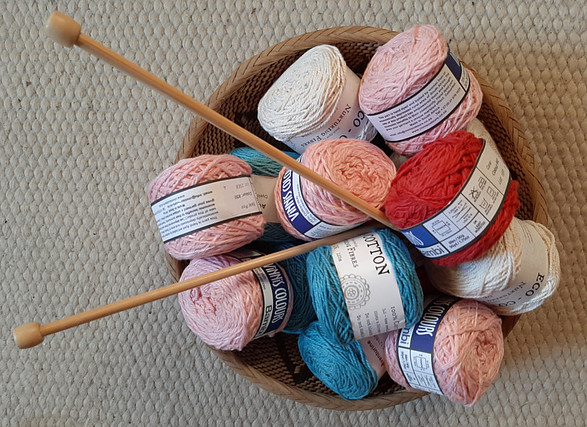 Why do we have abbreviations? By using abbreviations, the instructions are more concise and easier to follow. It is also used to save space when knitting patterns are printed.
Why do we have abbreviations? By using abbreviations, the instructions are more concise and easier to follow. It is also used to save space when knitting patterns are printed.
- Words are either shortened (eg. cont. = continue or continuing)
- or it can be a description of what needs to be done (eg. yon = yarn over needle)
Many patterns will also have their own descriptions and abbreviations, so if you do not find the specific abbreviation in this list, these would normally be included within the specific pattern that you are following. If you do get stuck, let me know!
Your Knitting Abbreviations Meanings
I hope that this comprehensive list of abbreviations that are used in knitting patterns, will help you work through your pattern. I have been knitting for more than fifty years, so if there are any of these that you do not understand, please let me know and I will help you out. There are different abbreviations in American patterns compared to British patterns, but these are the most commonly used knitting abbreviations.
alt = alternate – worked on every other stitch or row
approx = approximately
bet = between
BO = bind off
byo = backward yarn over
cc = contrasting colour
cn = cable needle
co = cast on
cont = continue or continuing
dec = decrease or decreasing – working two or more stitches together. A pattern will indicate whether two or more stitches are worked together
- to dec 1 st: insert the right hand needle knit wise or purl wise into the next 2 stitches on the left-hand needle, pull the yarn through thus making 1 stitch
- to dec 2 sts: insert the right hand needle knit wise or purl wise into the next 3 stitches and pull the yarn through, thus making 1 stitch.
- if more than 2 stitches need to be decreased, insert the right hand needle into the amount of stitches that need to be decreased and add one, pull the yarn through to create 1 stitch.
dpm = double pointed needles
foll = follow or following
gst = garter stitch – this is created by knitting every stitch on every row.
inc = increase or increasing – by working twice or more times into the same stitch 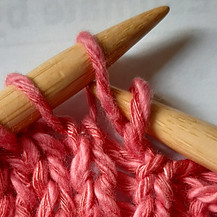
- to inc 1 st: knit or purl the next stitch, but do not drop the stitch off the left-hand needle. Knit or purl into the back of the stitch again, then drop the stitch thus creating another stitch.
- to inc 2 sts: knit or purl into the back or the front of the stitch three times before dropping the stitch on the left-hand needle, thus creating two extra stitches.
- to inc more than 2 sts: continue working into the back and the front of the stitch until the required number of stitches have been created.
k = knit
- k st: keep the yarn at the back and insert the point of the right hand needle into the front of the stitch on the left-hand needle from left to right. Bring the yarn from the back and over the top of the point of the right hand needle. Draw the loop through and the stitch and drop the stitch off the left-hand needle.
k1b = knit stitch in row below
kfb = knit into front of the stitch and again into the back, thus increasing one stitch
ksp = knit one stitch, slip this stitch from right needle to left needle, pass second stitch on left needle over first stitch and off left needle, return the stitch to right needle 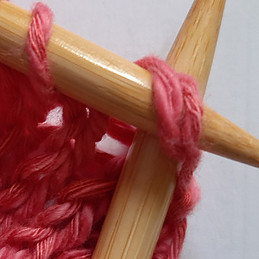
k2tog = knit two stitches together
lp = loop
m1 = make one stitch knit wise – pick up the horizontal loop between two stitches by inserting the point of the left-hand needle into the loop and knit or purl into the back of it.
m1R = make one right (single knit increase leaning towards the right)
m1L = make one left, (increasing one single knit leaning towards the left)
m1p = make one purl wise
m1rp = make one right purl wise
m1lp = make one left purl wise
mc = main colour
p = purl
- p st: with the yarn at the front, insert the point of the right hand needle into the stitch on the left-hand needle from right to left. Bring the yarn over and under the right hand needle and pull the loop through the stitch. Drop the stitch from the left-hand needle.
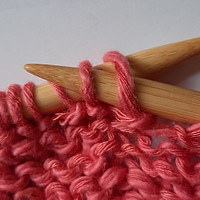
pat or patt = pattern
pfb = purl into front and back of stitch (thereby increasing one stitch)
p2tog = purl two stitches together
prev = previous
psso = pass slipped stitch over – insert the point of the left-hand needle into the front of the slipped stitch on the right hand needle. (The slipped stitch is the second stitch on the right hand needle). Lift the slipped stitch and pull it over the first stitch on the right hand needle.
p2sso = pass two slipped stitches over
rem = remain or remaining –
rep = repeat or repeating
skpo = slip 1, knit 1, pass slipped stitch over
sk2p = slip 1 knit wise, knit 2 together, pass slipped stitch over the knit 2 together 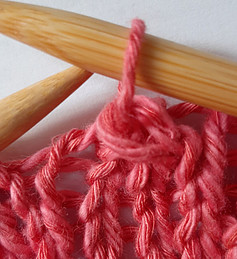
sl = slip
- sl1k – slip one stitch knit wise
- sl1p – slip one stitch purl wise
- sl 2 sts or more – slip 2 stitches or more
sl st = slip stitch
sm = slip marker
ssk = slip 2 stitches knit wise, knit these two stitches together through the back loops
ssp = slip two stitches knit wise, return these two stitches to the left-hand needle, and purl then together through the back loops
sssk = slip three stitches knit wise, knit these three stitches together through the back loops
sssp = slip three stitches knit wise, return these three stitches to the left side needle, purl these three stitches together through the back loops
s2kp2 = slip two stitches as if to knit together, knit one, pass two slipped stitches over the knit stitch
sspp2 = slip two stitches knit wise, return these two stitches to the left needle, and then slip them as to purl two together through back loops, purl one, pass two slipped stitches over purled stitch 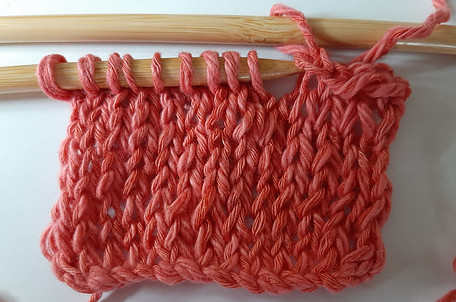
st = stitch
sts = stitches
stst = stocking stitch
tbl = through back of loop stitches
tfl = through front loop stitches
tog = together
ws = wrong side
w&t = wrap and turn
wyib = with yarn in back
yb = yarn back
yf or yfwd = yarn forward
yo = yarn over
yon = yarn over needle
yrn = yarn round needle
More Knitting Abbreviations Meanings and Jargon
Knitting cables and patterns are often just a combination of stitches and repetition of certain sections in the pattern. 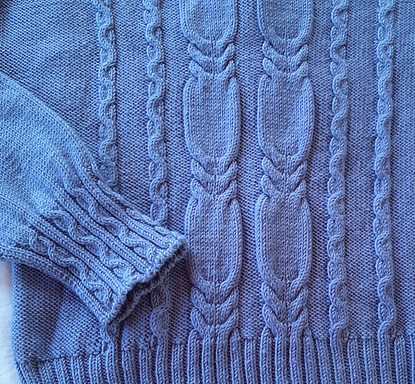 You would often find that pattern would include these in the instructions as well:
You would often find that pattern would include these in the instructions as well:
- An asterisks * when it indicates repetition of either stitches or the pattern. So you repeat the instructions following the single asterisk as directed.
- Double asterisks * * means that you need to repeat instructions between asterisks, as many times as directed, or repeat at specified locations.
- bracket () which means you have to the work instructions within brackets, as many times as directed.
- [ ] work instructions between the parenthesis, as many times as directed.
Sometimes you will find () within [ ] to form very specific patterns, but it should be clear as you follow your specific pattern. If you do encounter any problems, feel free to contact me for an explanation.
I hope that this comprehensive list will cover what is required in your pattern. Additional information is also available on Wikipedia,
Beanie Pattern
These are free knitting instructions for a pattern that I developed myself when I knitted it for our granddaughter. The size is for approximately 6 months old. Please use the abbreviations as above in my knitting abbreviations meanings.
This was knitted in a 4 ply Egyptian cotton on a size 4mm knitting needle (American size 8 needle). If you want a bigger size, then add 10 sts and adjust the length by 4 rows.
Visit Knitpick, who have a very big selection of exciting yarns, to order your yarn or knitting needles.
Row 1: (k2, p2, k4, p2) rep 7x
Row 2: (p2, k2, p4, k2) rep7x
Row 3: same as row 1
Row 4: same as row 2
Row 5: (k2, p2, sl2st onto cable needle at front of knitting, k2, k2st from cable needle) rep 7x
Row 6. Same as row 2
Repeat these 6 rows 4 times to form the rib.
Cont with 22 rows stst
Next row: K1 (k2tog) rp x 23, k1 = 46 st
Next row: Purl
Next row: K1 (k2tog) rp x 15, k2 = 32 st
Next row: Purl
Next row: (k2tog) x 16 = 16 st
Next row: Purl
Next Row: Purl
Final row: K3tog, k3tog, k2 = 3st
Pull 3 sts through together. Sew up the side seam
If you are doing it in a bigger size, you might need to adjust the sts when you are decreasing.
If you didn’t find what your needed, or If you have any questions about knitting abbreviations meanings, or any additions that you would like to make, please leave your comments below and I will get back to you.
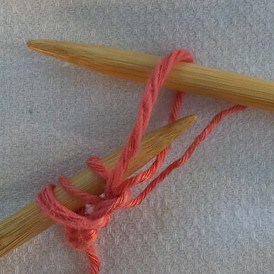
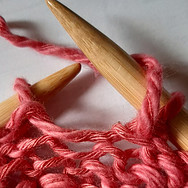
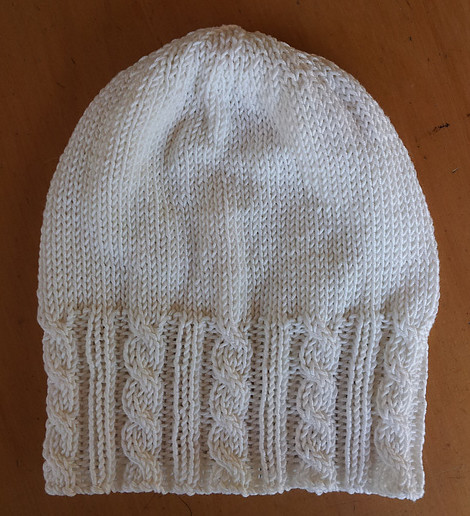
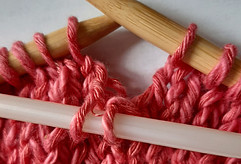

I am fairly new to knitting (4 years) and so far I’ve just made a couple of simple hats and blankets but I feel ready to branch out now so I’m very happy to find this list of abbreviations! I recently bought my first book of patterns and was dishearted by the fact that I couldn’t understand them I’m going to print this page and bookmark your site for further instruction. Thank you!
I am pleased to hear that you found the list helpful. Happy knitting!
Hi,
I have been seeing BO and byo a lot in all the posts I have been reading about knitting. I know that this has been a very convenient occasion to restart knitting but these abbreviations were annoying me a bit. Thank you very much for thinking in us and writing this directory. I’ll also bookmark your site and start reading your posts.
Hi Ann, it is indeed annoying when one has a pattern with abbreviations, but you don’t know what they all mean. Which was the main reason why I compiled this directory. I hope it will help all the knitters and learners out there. Liné
It is obvious that you have a wealth of knowledge on this subject and that you are a great teacher on the topic. I know that some things never change and there are some arts that will always be around. My question, how can we get the younger generation interested in this art of the past. I experimented with knitting many years ago and really enjoyed it. However, I never knew anything about knitting abbreviations and their meaning. Great article and very good information for knitters.
Knitting is such a great craft and another one that is easy to carry around and continue wherever you are. With Home Economics no longer being taught at schools, it means that all the kids are missing out on learning basic skills that can help them throughout life, such a pity.
Ohh great!
I do knit but I have always learned it in french and for a year now that I am comfortable with my English, I have been trying to learn how to do some new stuff from English speaking videos. But I have never understood the abbreviations.
So, I am very grateful for this directory of knitting, I am gonna bookmark your post and use it every time I need.
Thanks.
I am pleased to hear that you find the knitting abbreviations helpful as it is often the area where people get stuck once they learn how to knit. Happy knitting!
I run a knitting website, and I have to agree that knitting is a great way to destress yourself and keep your hands busy, especially now that most of the world is on shut down. It always helps to explain the abbreviations, as this is where a lot of people get stuck once they learn how to knit the basics, and this page is a great refer to page when following a pattern.
I am definitely going to try your beanie pattern, as I love the cable detail around the rim.
Thank you Michel for your kind feedback. I love cables and thought adding the cable as part of the rib, would give it a special look, so I am very pleased with the way it turned out.
I would love to create a website like yours as the template used is really nice, simple and brings about clarity of the write ups, but then you wrote a brilliant article on directory of knitting abbreviations and the meanings that comes with them. you have helped me learn some words that sounded confusing befor. thank you very much
Thank you for your kind feedback and I am pleased to hear that you now have a better understanding of the meanings of some knitting abbreviations.
Hello, the first thing that i noticed when i opened this page is the beauty of the website. i am sure you have put much effort into creating this article and the details are really clear here. i read this page twice and i did this so i could get a clearer understanding. i would need assistance with some pictures. how do i get them?
Hi Benny, thank you for your kind comments. The photographs in this directory of knitting abbreviations meanings are all my own. I do a lot of hand crafts and take photos as I go along. It is really easy to upload images to your posts, but if you need help please let me know.
Wow, I didn’t realise there were that may terms and abbreviations. I know knitting isn’t easy but I thought the list of abbreviations was going to end and yet it kept going.
Do you need all of these from day 1, or are some more relevant as you start to take on more complex works?
It very much depends on the pattern your are using. Many patterns have their own list but often you come across patterns where you need them. So this is a good source to refer back to